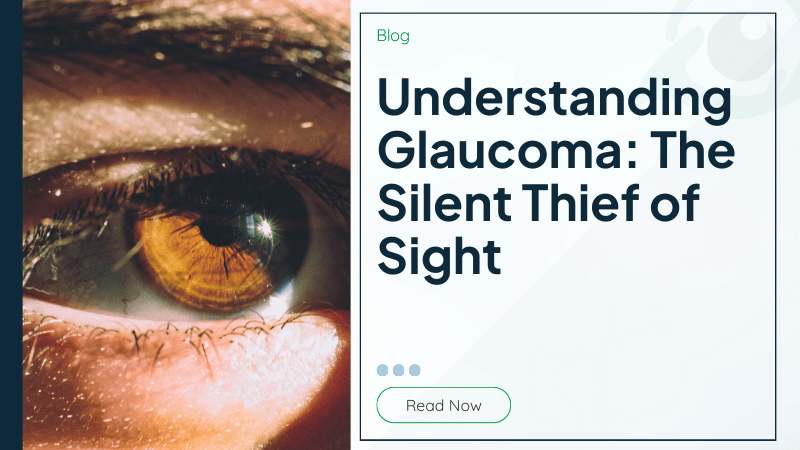- About
- Services
- Conditions
- Pricing
- Book an Eye Exam

Glaucoma is a formidable eye condition that often goes undetected until significant vision loss has occurred. It's like a stealthy thief, silently affecting millions of people worldwide. In this post, we will delve into the world of glaucoma, exploring its causes, symptoms, diagnosis, and treatment options. By increasing awareness and understanding, we can take proactive steps to protect our precious gift of sight.
What is Glaucoma? Glaucoma is not a single disease, but a group of eye conditions characterized by damage to the optic nerve, the crucial pathway that transmits visual information from the eye to the brain. The primary culprit behind this damage is increased intraocular pressure (IOP). Over time, the optic nerve fibers degenerate, leading to permanent vision loss if left untreated.
There are several types of glaucoma, with the most common being open-angle glaucoma and angle-closure glaucoma. Open-angle glaucoma is gradual and painless, developing slowly over the years. On the other hand, angle-closure glaucoma is more sudden and often accompanied by noticeable symptoms like severe eye pain, blurred vision, and headaches. Both types require prompt medical attention to prevent further damage.
While anyone can develop glaucoma, certain factors increase the risk. These include advancing age, a family history of glaucoma, certain medical conditions (e.g., diabetes, hypertension), and prolonged use of corticosteroid medications. Unfortunately, glaucoma is often asymptomatic in its early stages, making regular eye exams crucial for early detection. As the disease progresses, symptoms such as peripheral vision loss, tunnel vision, blurred vision, and eye discomfort may manifest.
Timely diagnosis plays a pivotal role in managing glaucoma effectively. Eye care professionals employ various tests to evaluate the health of the optic nerve and measure IOP. These may include visual field tests, optic nerve imaging, and tonometry to measure eye pressure. Once diagnosed, treatment options aim to lower IOP and prevent further damage. These can include eye drops, oral medications, laser therapy, and in some cases, surgical interventions. Regular follow-up appointments are necessary to monitor the condition and adjust treatment as needed.
Managing glaucoma requires a multifaceted approach. In addition to prescribed treatments, adopting a healthy lifestyle can be beneficial. This includes maintaining a balanced diet rich in antioxidants, regular exercise, avoiding smoking, and managing other medical conditions that may exacerbate glaucoma. It's also important to stay informed, attend regular eye exams, and communicate openly with your eye care professional to address any concerns or changes in your vision.
Glaucoma is a stealthy eye condition that demands attention and proactive care. By understanding the risk factors, recognizing potential symptoms, and seeking regular eye exams, we can stay one step ahead of this silent thief of sight. Remember, early detection and proper management are key to preserving vision and enjoying a fulfilling life. Let's prioritize our eye health and ensure a brighter future for our eyes and the precious gift of sight they provide us.
Book your comprehensive eye exam in Calgary with Eye Check Calgary. Whether it’s digital eye strain, dry eyes, diabetes-related vision concerns, or a contact lens fitting, we’ll guide you through every step with care and clarity. Call us today at 587-441-5254.